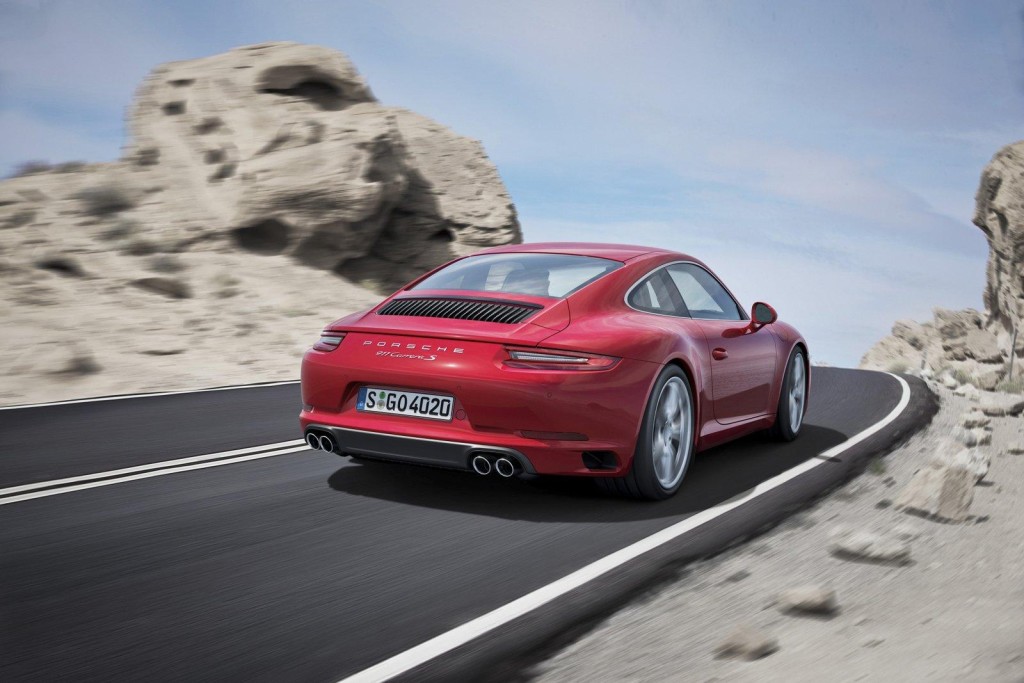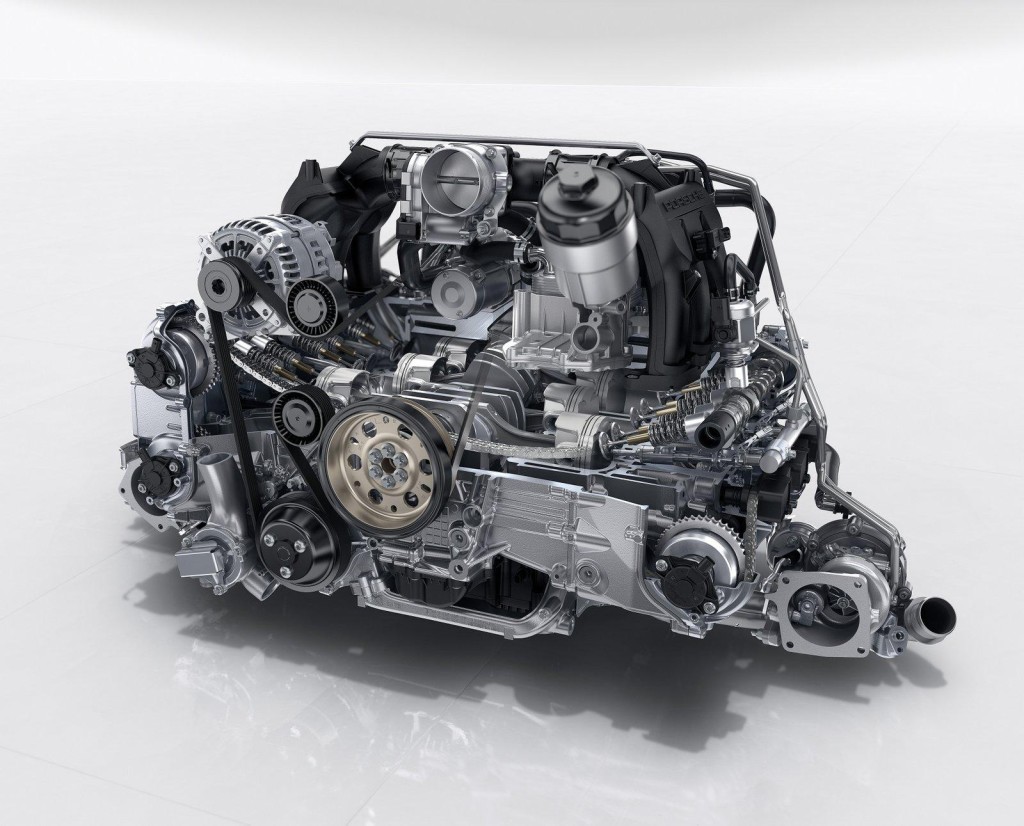 Porsche has unveiled the 911 Carrera facelift prior to its debut at the upcoming Frankfurt Motor Show.
Porsche has unveiled the 911 Carrera facelift prior to its debut at the upcoming Frankfurt Motor Show.
The updated model gets new headlights with four-point daytime running lights, new engine lid with vertical louvres and new tail lights featuring distinctive four-point brake lights. In the interior, the updated Porsche Communication Management (PCM) system comes with a multi-touch display. The PCM can be operated by performing multi-touch gestures on the seven-inch display, similar to operating a smartphone. User inputs by handwriting are also possible.  The new car also gets a new range of optional equipment:
The new car also gets a new range of optional equipment:
- Optional automatic speed control can now also brake moderately when the pre-set speed is exceeded.
- Optional adaptive Cruise Control (ACC) now has a coasting function in conjunction with the PDK transmission. When driving behind a slower car, the clutches are disengaged, thus saving fuel with unpowered coasting.
- Optional lane Change Assistant monitors traffic behind with radar and uses LED lamps in the left and right of the mirror triangle to warn the driver about approaching vehicles in the blind spot.
- A post-collision braking system as a standard feature.
 Power comes from a new generation 3.0 litre twin turbo six cylinder engine that develops 370 horsepower and 450 Nm torque in the 911 Carrera and 420 horsepower and 500 Nm in the 911 Carrera S. The 911 Carrera with PDK and Sport Chrono Package goes from 0 to 100 km/h in 4.2 seconds , making it two tenths of a second faster than its predecessor. The 911 Carrera S with PDK and Sport Chrono Package does the sprint in just 3.9 seconds (also 0.2 seconds faster). Top speed for the Carrera and Carrera S is 295 kph and 308 kph respectively.
Power comes from a new generation 3.0 litre twin turbo six cylinder engine that develops 370 horsepower and 450 Nm torque in the 911 Carrera and 420 horsepower and 500 Nm in the 911 Carrera S. The 911 Carrera with PDK and Sport Chrono Package goes from 0 to 100 km/h in 4.2 seconds , making it two tenths of a second faster than its predecessor. The 911 Carrera S with PDK and Sport Chrono Package does the sprint in just 3.9 seconds (also 0.2 seconds faster). Top speed for the Carrera and Carrera S is 295 kph and 308 kph respectively.
Porsche offers a hydraulic lift system with integrated lifting cylinders in the struts of the front axle. Pressing a button increases the ground clearance at the front by 40 millimetres within 5 seconds. This can be very useful on our roads to tackle speed breakers and bad roads. The Carrera S also comes with an active rear-axle steering as an option. It supports high driving stability when changing lanes at high speeds and ensures greater manoeuvrability in city traffic thanks to the reduction of the turning circle by 0.5 metres.















